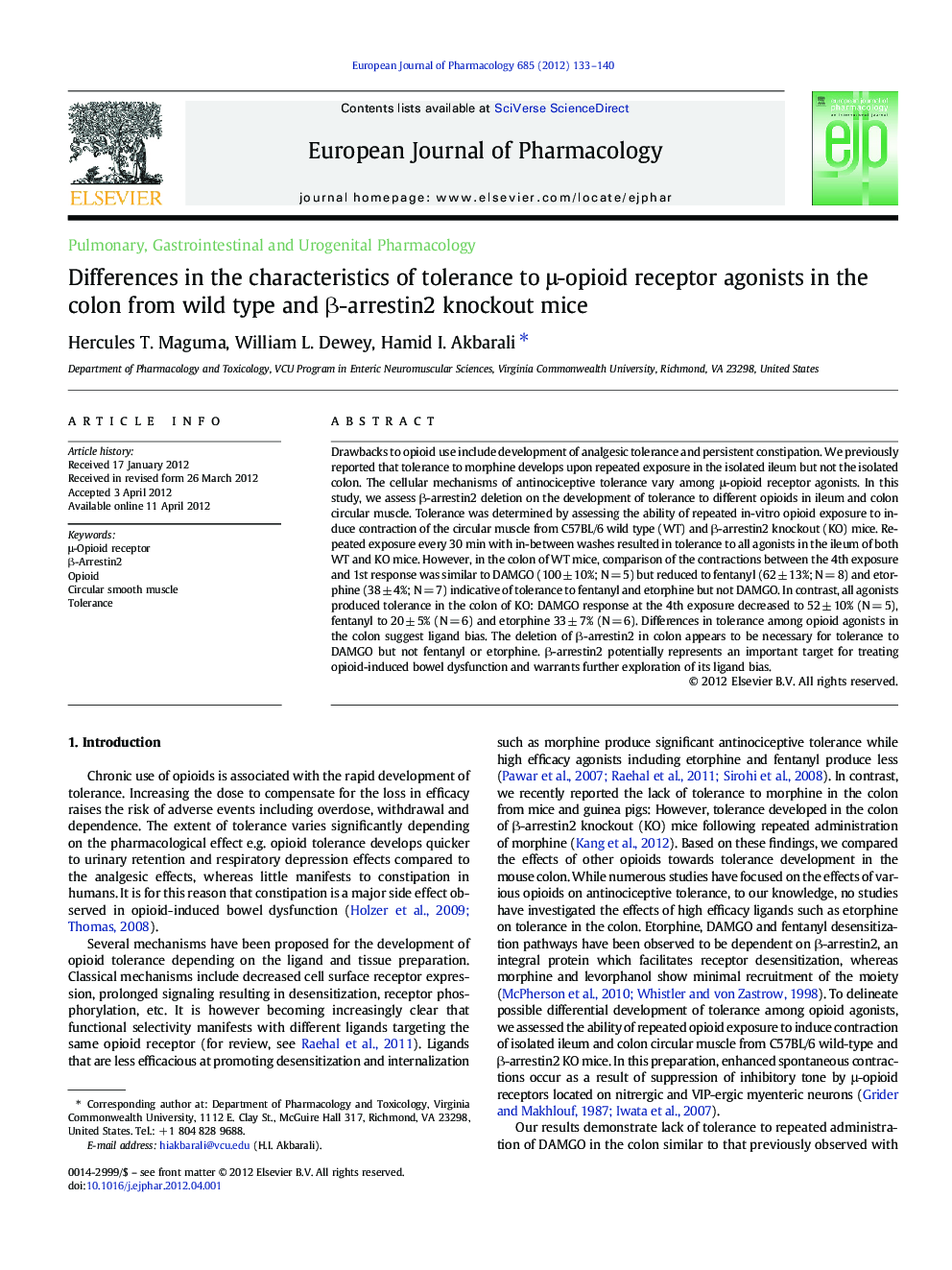| Article ID | Journal | Published Year | Pages | File Type |
|---|---|---|---|---|
| 5829497 | European Journal of Pharmacology | 2012 | 8 Pages |
Abstract
Drawbacks to opioid use include development of analgesic tolerance and persistent constipation. We previously reported that tolerance to morphine develops upon repeated exposure in the isolated ileum but not the isolated colon. The cellular mechanisms of antinociceptive tolerance vary among μ-opioid receptor agonists. In this study, we assess β-arrestin2 deletion on the development of tolerance to different opioids in ileum and colon circular muscle. Tolerance was determined by assessing the ability of repeated in-vitro opioid exposure to induce contraction of the circular muscle from C57BL/6 wild type (WT) and β-arrestin2 knockout (KO) mice. Repeated exposure every 30 min with in-between washes resulted in tolerance to all agonists in the ileum of both WT and KO mice. However, in the colon of WT mice, comparison of the contractions between the 4th exposure and 1st response was similar to DAMGO (100 ± 10%; N = 5) but reduced to fentanyl (62 ± 13%; N = 8) and etorphine (38 ± 4%; N = 7) indicative of tolerance to fentanyl and etorphine but not DAMGO. In contrast, all agonists produced tolerance in the colon of KO: DAMGO response at the 4th exposure decreased to 52 ± 10% (N = 5), fentanyl to 20 ± 5% (N = 6) and etorphine 33 ± 7% (N = 6). Differences in tolerance among opioid agonists in the colon suggest ligand bias. The deletion of β-arrestin2 in colon appears to be necessary for tolerance to DAMGO but not fentanyl or etorphine. β-arrestin2 potentially represents an important target for treating opioid-induced bowel dysfunction and warrants further exploration of its ligand bias.
Related Topics
Life Sciences
Neuroscience
Cellular and Molecular Neuroscience
Authors
Hercules T. Maguma, William L. Dewey, Hamid I. Akbarali,
